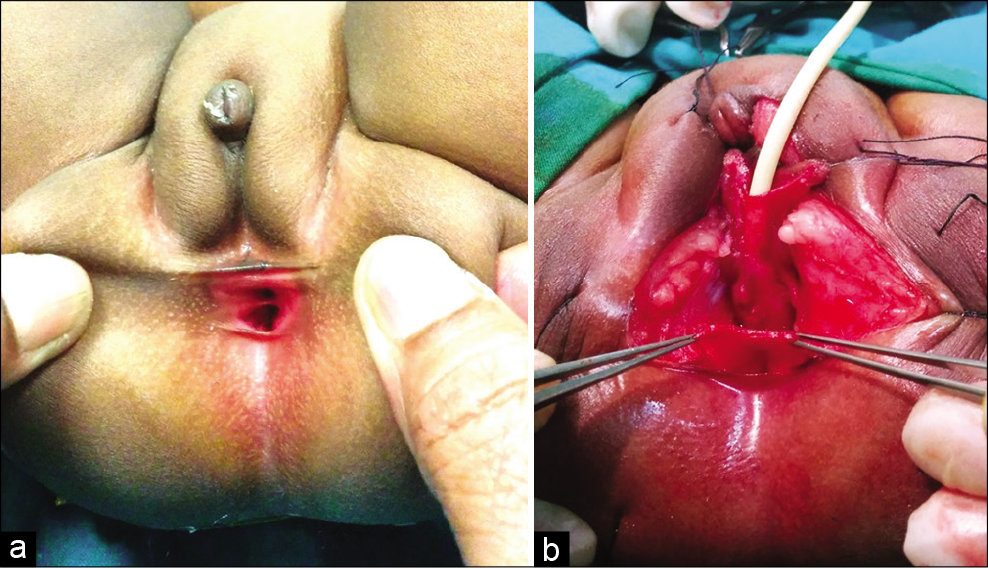Translate this page into:
Posterior cloaca: A rare complex anomaly
*Corresponding author: Pradnya S. Bendre, Department of Pediatric Surgery, Bai Jerbai Wadia Hospital for Children, Maharashtra, India. suhaspradnya@yahoo.com
-
Received: ,
Accepted: ,
How to cite this article: Banerjee A, Bendre PS. Posterior cloaca: A rare complex anomaly. Wadia J Women Child Health 2022;1(1):45-6.
Coined by Alberto Peña, “posterior cloaca” is a unique defect in females in which a urogenital sinus (UGS) deviates posteriorly to open into the anterior wall of a normally located anorectum (type A) or in the perineum slightly anterior to the anus (type B). [Figure 1a] Initial diagnosis is difficult in girls with normal looking external genitalia as they have a normal anal opening and manual separation of the labia reveals the absence of urethral and vaginal openings.[1] The ideal repair is Total Urogenital Mobilization by an anterior sagittal incision via transperineal (in cases with a short common channel or 2 separated orifices) [Figure 1b] or transanorectal approach (in longer common channels or when the UGS opens in anterior rectal wall). As the rectum is usually normally located within its sphincteric mechanism, these girls have normal sensation, a normal sphincter mechanism and potential for full bowel control, except those having severe sacral deformities.[2]

- (a) Two openings of urogenital sinus (UGS) and anus, (b) During total urogenital mobilization, UGS is seen catheterized with a normal posteriorly placed anorectum which is left in place.
Declaration of patient consent
The authors certify that they have obtained all appropriate patient consent.
Financial support and sponsorship
Nil.
Conflicts of interest
There are no conflicts of interest.
References
- Posterior cloaca: A rare subtype of a complex anorectal malformation. Congenit Anom. 2021;61:234-5.
- [CrossRef] [PubMed] [Google Scholar]
- Posterior cloaca further experience and guidelines for the treatment of an unusual anorectal malformation. J Pediatr Surg. 2010;45:1234-40.
- [CrossRef] [PubMed] [Google Scholar]





